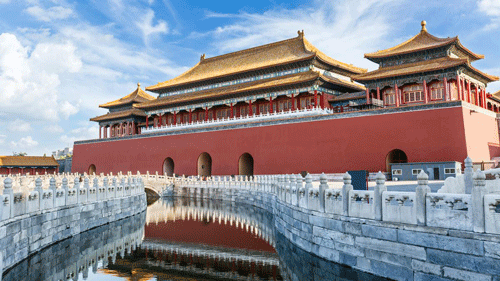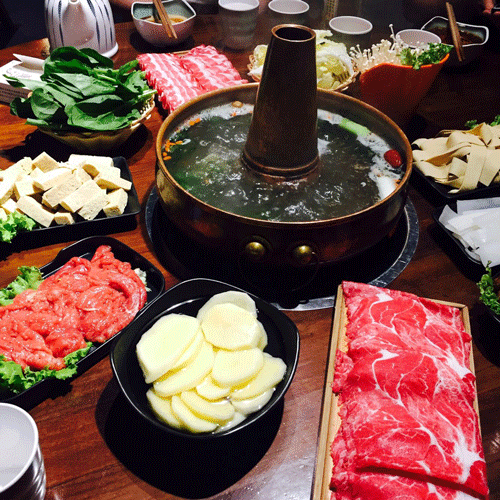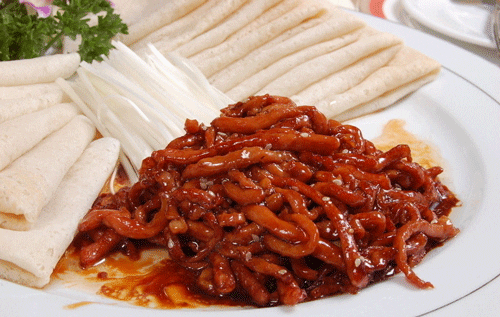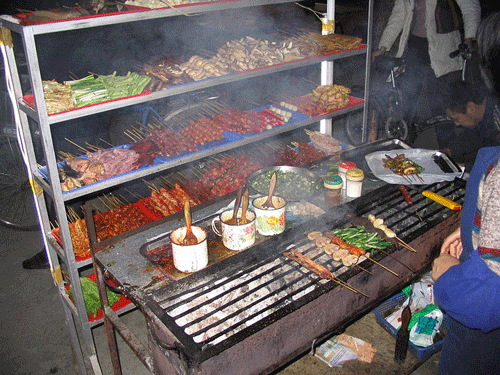Beijing Travel Guide
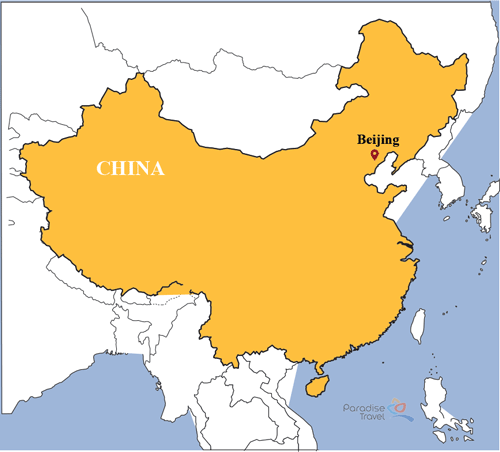 Beijing is one of the most ancient capitals of the world. It is the largest city in China after Shanghai with a population of 22 million people. Combining both historical and metropolitan aspects, Beijing is the center of China’s economy, politics, culture, and technology. It is a giant city with several fascinating attractions and bustling lifestyle.
Beijing is one of the most ancient capitals of the world. It is the largest city in China after Shanghai with a population of 22 million people. Combining both historical and metropolitan aspects, Beijing is the center of China’s economy, politics, culture, and technology. It is a giant city with several fascinating attractions and bustling lifestyle.
Best Time to Travel to Beijing
Autumn and spring are the best time to visit Beijing. We do not recommend you visit the city during Chinese Lunar New Year or Chinese National Holiday (October 1 to October 7) when all attractions are crowded with local tourists. It is hot and humid in this place during summer (June to August) when the temperature can reach 26 to 30 degree Celsius. On the other hand, it will snow during winter from December to January. Don’t visit this city in December when the temperature may drop to -4 degree Celsius and the air is of the lowest quality. So if you have respiratory issues, avoid Beijing winter.
Beijing Travel Tips
- The cheapest way to get around the city is using the subway. Taxis are affordable but slow when traveling around this bustling city. Cycling is a must-do activity when visiting small hutongs.
- Although it is the capital, fewer people can speak English than Shanghai and Hong Kong. So prepare some translation apps for your smartphone.
- Most historical sites are open from 8:00 am until 16:00 pm, save your daytime for sightseeing
What to See in Beijing
1. Great Wall
There is a saying that if you did not visit the Great Wall, you would not have been to China. With the total length of approximately 9000 kilometers, this spectacular defensive construction is recognized as the World Cultural Heritage Site. Originally built over 2500 years ago during Zhou Dynasty, the Great Wall is the symbol of Chinese resilience, perseverance and engineering genius.
2. The Forbidden City

- The Forbidden City
Located in the center of Beijing, the Forbidden City (also known as the Imperial Palace Museum) is the home of the kings during Ming and Qing dynasty. Built in the early 15th century, this architecture is now recognized as the World Heritage site and one of the most well-preserved wooden constructions of the world. Elegantly designed in red and yellow, the Forbidden City represents the social position of ancient emperors during feudalism.
3. Tiananmen Square
It is the city square located in the center of Beijing and only 5 minutes drive from the Forbidden City. This place was originally built during Ming dynasty in 1415 and there were many political events happened at Tiananmen Square since then. The most notable one was the declaration of People’s Republic of China by Mao Zedong in 1949. Tiananmen Square consists of the Monument of the National Heroes, the Great Hall of the People, the National Museum of China, and the Mausoleum of Mao Zedong.
4. Summer Palace

- Summer Palace
Summer Palace is located 15 kilometers from the northwest of Beijing. This splendid architecture was once a getaway place owned by Chinese imperial families from sultry Beijing in summers. It is the vast complex of lakes, gardens and palaces with two highlights: a three-storey Great Opera Hall and Hall of Joy and Longevity (Le Shou Tang Hall) with rustic gardens and courtyards. The best time to visit this place is during summer when cruises are accessible.
5. Beijing hutongs

- Hutongs
Hutong means a lane or an alley in English. This place is a quaint small alley with narrow roads and one-storey buildings. Hutongs are perfect for your photo shoots with tranquil scenery and rustic architecture. You can spend your time in souvenir stores, craft-making classes and cooking classes on your Hutongs tour. Immersing yourself in an ancient alley and attending a culinary class is the best way to understand Chinese culture authentically.
6. The Temple of Heaven
The Temple of Heaven is considered as the most important imperial temple in China. Built in 1420 by a Ming emperor, this place was used to pray for good harvest. Visiting this temple, you will understand ancient Chinese people’s perspectives on the relationship between sky and earth and how traditional solar terms were applied in architecture.
7. Lama Temple
Lama Temple, also known as Yonghe Temple (Palace of Peace and Harmony), is the biggest Tibetan Buddhist Temple in China. There are five courtyards in this temple and The Hall of Boundless Happiness is the highlight of Lama Temple with a magnificent 26-meter-high Buddha statue.
8. Bell and Drum Towers

- Bell Tower
These two towers were originally constructed in 1272 during Yuan dynasty. These two towers were functioned as time-announcing places during ancient dynasties. You will see a King Bell and drums in Bell and Drum Towers respectively which were beaten to announce the hour. Climbing steep stairs of these two buildings, you will get the whole view of poetic Beijing.
9. Ming Tombs
50 kilometers from the northwest of Beijing, Ming Tombs are the system of 13 imperial tombs constructed by the emperors of Ming dynasty. This attraction is located in a strategic position according to feng-shui rules: it is on the slope of a mountain and there is a river flowing near it. Please note that there are only three Ming tombs which are open for tourists: Dingling, Changling, and Zhaoling tombs.
10. Beijing Temple of Confucius

- Beijing Temple of Confucius
With an area of more than 20,000 square meters, Beijing Temple of Confucius is considered the second largest temple functioned for Confucianism worshipping in China. Confucius is an influential teacher and philosopher in China. He founded Confucianism, ethical and philosophical codes that were strictly followed by imperial dynasties during feudalism.
What to Do in Beijing
Sightseeing in some imperial relics
There are many attractions in Beijing, from historical and cultural sites to delicious traditional cuisines. This dynamic capital is worth visiting for 3 days or more.
Being the capital of China for more than 850 years, it is obvious that there are a lot of historical sites in this city. Beijing attracts international tourists with several imperial highlights; six of them are listed as UNESCO Heritage sites. Some must-visit sites in this charming city are the Great Wall, the Forbidden City, Tiananmen Square, Summer Palace, the Temple of Heaven, and Beijing hutongs.
Taste Chinese food

- Beijing roast duck
Beijing is considered one of the culinary centers in China with many fascinating dishes and world-class restaurants. Beijing roast duck is obviously the must-try cuisine when you enter this city. With crispy skin and delicious sauce, you never go wrong with this dish. The sauce will vary in different places and the sauce’s recipe is kept secret in some longest-running restaurants.
Visit extraordinary modern architecture
If you want to go to some contemporary places, here are some places for you to check out
- Beijing Planning Exhibition Hall: an urban planning museum near Tiananmen Square.
- Beijing Olympic Park with stunning ‘Bird’s Nest’ stadium and jaw-dropping National Aquatics Centre
- Beijing Capital Museum: showcase this city’s history as the Chinese capital
- 798 Art District: This place contains a lot of contemporary art galleries, coffee shops and performing art spaces.
Watch an art performance

- Peking Opera
Peking Opera is a classic art form that is unique with its colorful costumes and combination of singing and other performing arts such as dialogue, acrobatics, dancing or martial arts. The plot is comprehensible though you do not understand the language.
Children will be in love with Kung Fu show and Acrobatics show. The skillful performers, their elegant costumes, and exciting skills will bring you an unforgettable night in Beijing.
Enjoy nightlife and shopping
There are a lot of bars, clubs, shopping malls, night markets and theaters for you to discover. The city will be brightly lidded at night, so spend your time walking around. Silk clothing, souvenirs, and tea can be found everywhere in hutongs, buy some for your family and friends.
What to Eat in Beijing
Located in the North-Central of China, Beijing foods have a strong flavor with seasonings such as garlic, ginger, onion and pepper. However, they are adapted so that international tourists can sample the quintessence of Chinese cuisines. Imperial culinary is prevalent in this ancient capital and tourists can easily find some local restaurants which serve the classic Chinese cuisines.
1. Beijing Roast Duck

- Peking Duck
There are two things you cannot miss during your Beijing trip: climbing the Great Wall and sampling Beijing roast duck. Ducks are seasoned before being hung and roasted in an oven. This food is famous for its vibrant red color and crispy skin. The chefs usually slice the duck in front of you; they will ensure that each thin flake has its own piece of brownish-red skin.
You can taste this food directly with sauce; however, it will be intriguing to taste hot roast duck with pancake and some vegetables. Put the pancake on your palms, spread the plum sauce, and finally put some cucumbers and carrots stick and a piece of duck. Gently wrap it and eat with sauce. Beijing Roast Duck will be ideal to enjoy in spring and autumn when the weather is pleasantly cool.
Some famous Beijing roast duck restaurants
- Da Dong Duck Restaurant: F1-F2, Nanxincang Business Building, 22 Dongsitiao Jia, Dongcheng District
- Quanjude Roast Duck Restaurant: with 10 branches across Beijing, it is considered the oldest roast duck chains in China.
2. Beijing Mutton Hotpot

- Beijing Mutton Hotpot
This cuisine originates from Mongolia and has been popular in China since Yuan dynasty. Sliced mutton and other meats, vegetables and mushroom are boiled in a hotpot. The thinly sliced meat will be cooked quickly and evenly. Enjoy succulent mutton with delicious broth and sesame sauce.
Some famous mutton hotpot restaurants in Beijing
- Dong Lai Shun: 5/F, Xindong’an Plaza, Wangfujing Dajie, Dongcheng District
- Huang Cheng Lao Ma: 39 Nanqingfengzha Houjie, Dabeiyao, Chaoyang District
3. Beijing Jing Jiang Rou Si

- Beijing Jing Jiang Rou Si
This is a traditional Beijing cuisine which originated from this city. Generally speaking, it is sliced pork stirred with sweet bean sauce. You can eat this food by rolling it in dried tofu wraps. You cannot miss Jing Jiang Rou Si for your dining experience in Beijing.
4. Zhajiangmian (Beijing Fried Sauce Noodles)

- Zhajiangmian
Carbohydrate dish is one important part of your Beijing cuisine adventure. Zhajiang mian, also known as Zhajiang Noodles is made from thick wheat noodles mixed with eggs and some vegetables such as bean sprouts, radish, carrots and cucumbers. Ground pork or beef and soybean paste are used to make this food’s sauce.
5. Jiaozi (Chinese Dumplings)

- Jiaozi
Jiaozi is a well-known kind of dumplings in Beijing. This food is made of minced pork mixed with vegetables in flour wraps. It is served with soybean sauce, vinegar, and chilli.
Some famous Jiaozi restaurants in Beijing
- Baoyuan Dumplings: North of 6 Maizidian Jie, Chaoyang District
- Mr Shi’s Dumplings: 74 Baochao Hutong, Gulou Dong Dajie
6. Donkey Burger

- Donkey Burger
This dish’s origin is in Hebei province and it is well-known in Beijing now. Lean donkey meat will be shredded and wrapped in round or rectangular buns. This food is rich in protein and suitable to try after your long walking tour in Beijing.
7. Barbecue skewers

- Barbecue skewers
You can find this food in every food street such as Wangfujing Snack Street, Guijie (Ghost Street) or Niujie Muslim Snack Street. The raw ingredients are skillfully seasoned before cooking. Everything from meat to mushrooms and vegetables can be skewered and roasted. You can choose whether to taste it spicy or not.
Some famous restaurants in Beijing:
- Din Tai Fung Restaurant: No.24, Xinyuanxili Zhongjie, Chaoyang District, Beijing
- Courtyard 7 Restaurant: 7 Qian Gulou Yuan Lane, The Southern Gong and Drum Lane, Dongcheng District
- Shan Shui Jian Yang Jie Zi Restaurant: 8 Longtan Road, Congwen District
- Jardine Matheson Spring Restaurant: No.12, Yiheyangguang Building C, Dongtucheng Road, Chaoyang District
Must-visit Beijing food streets
- Donghuamen Night Snack Market: Donganmen Street, Dongcheng District
- Guijie Street: Dongzhimennei Dajie (Avenue), Dongcheng District
- Jiumen Snack Street: Xiaoyou Hutong, Shichahai Houhai, Xicheng District
- Niu Jie Muslim Snack Street: Guanganmen, Xuanwu District
- Fucheng Street: Between Hangtian Bridge and Dinghui Bridge in the Haidian District
- Qianmen Snack Street: Qianmen Street of Xuanwu Street; near Tiananmen Square
- Wangfujing Snack Street: Wanfujing Business Street, Doncheng District
- Guanganmen Snack Street: Guanganmen Street, Xuanwu District
- Hao Yun Jie Snack Street: Yansha Business Circle, Chaoyang District
- Longfusi Snack Street: North of Dongsi Longfu Mansion, Dongcheng District

